Fiber Arts Take Over a Former Seaport Warehouse in NYC
See waterfalls of fabric, intricate threadwork, massive tapestries, and more!


When you think of NYC parks, the first that come to mind are probably the famous Central Park and Prospect Park. However, sometimes it’s the local and lesser-known parks that have the best secrets. McCarren Park in Brooklyn is one great example. McCarren Park is a 35-acre hub of constant activity and diverse frequenters, bordered by Nassau Avenue, Bayard Street, Lorimer Street, and North 12th street. First conceived in 1903, it’s now home to a track, a variety of athletic fields and courts, and an outdoor Olympic-sized pool that reopened in 2012. From hidden tunnels to artwork, here are the top ten secrets of McCarren Park.

The McCarren Park Pool—a designated historic landmark— was built in 1936 by Robert Moses as one of eleven public pools with Works Progress Administration funding. These massive pools were built with enormous filtration and heating systems, along with underwater lighting. To support this behind-the-scenes infrastructure, McCarren Pool features a rarely seen tunnel network that rings the entire perimeter of the pool, connecting a former boiler room under the entrance arches to the filtration plant in the rear. There are more photos of these tunnels along with a complete retrospective of McCarren Pool’s “dark” days of abandonment here. The pool fell into disrepair and eventually closed in 1984. After restoration, it reopened in 2012.

Image via nyc.gov
Did you know that the McCarren Pool also has a bathhouse? And the bathhouse currently has artwork—but you can only see it if you look up! This month, the McCarren Park Pool Bathhouse has a new Percent for Art Artwork installation, Double Sun, timed with the opening of the pool this summer. Artist Mary Temple began work on this project immediately after the 2016 swimming season, during evening hours over approximately fourteen evenings. The two highly visible troupe l’oeil illusions were hand-painted using hand-mixed latex paints, tinted lighter than the base color. The tree-branch murals that make up the installation will welcome visitors as they move beneath the archways.
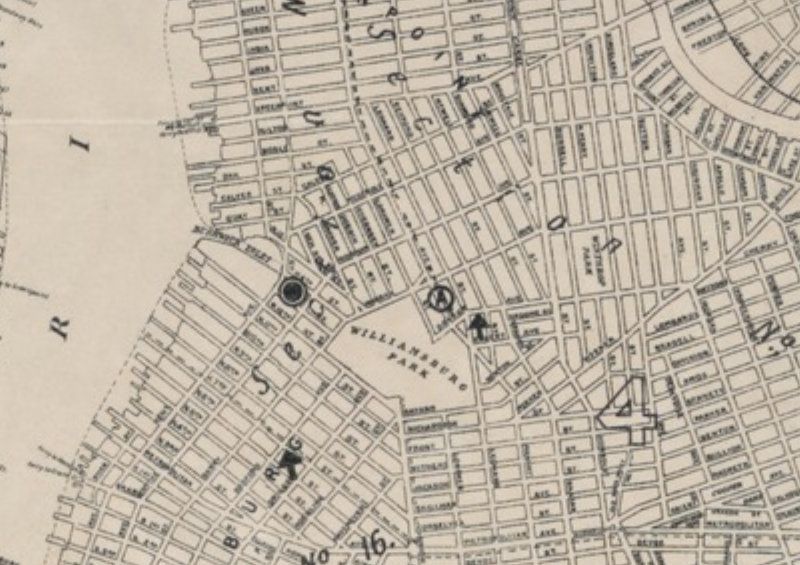
1906 map. Image via New York Public Library Maps Collection
McCarren Park has had several names since it was conceived in 1903. It was originally called Williamsburg Park and in 1906, the Board of Aldermen changed the name to “Greenpoint Park,” and in 1909 to “McCarren Park.” This is recorded in the Proceedings of the Board of Aldermen and also reflected in historic maps.
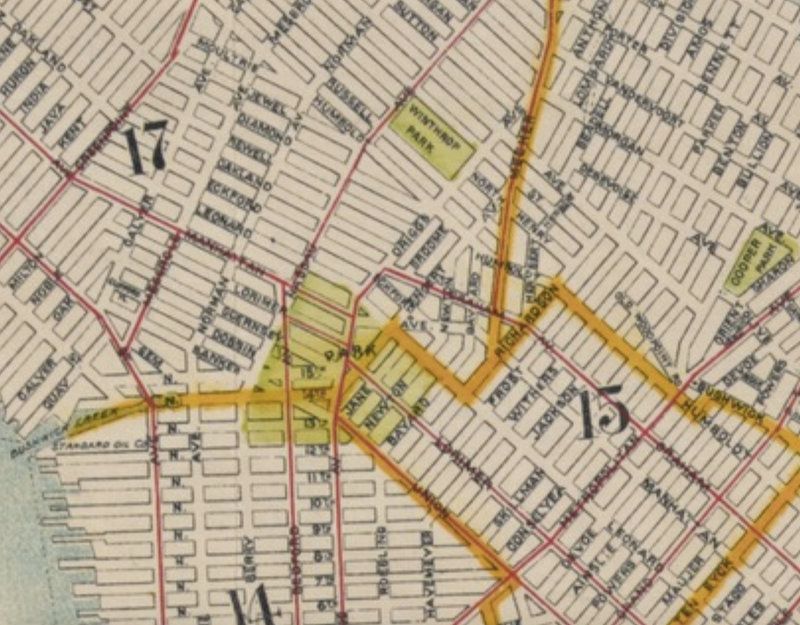
1910 Map. Image via New York Public Library Maps Collection
It is labeled as Williamsburg Park in this map from 1906 (and another one from the year before, when the park was in the construction and planning stages). But into 1910 the park remained unmapped and/or colored in green on top of streets in maps. This 1910 map merely calls the spot “Park.” Finally, also in 1910, a Field Map to the Parks and Parkways of Brooklyn and Queens Boroughs issued by the City of New York labeled it “McCarren Park.”
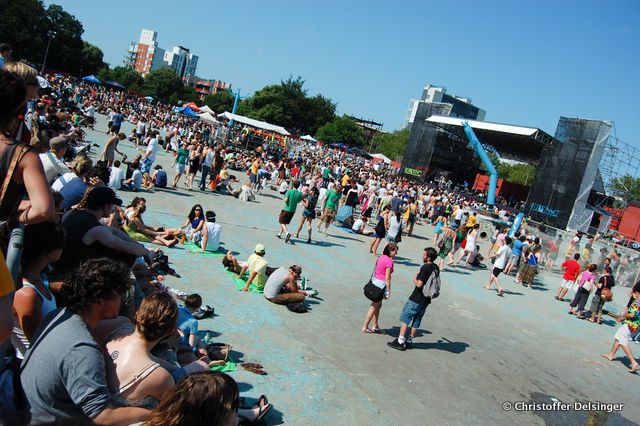
Before the McCarren Park Pool reopened in 2012, it was a vast, vacant basin—a great venue for concerts! The space held 6,000 people and offered free Sunday concerts. During the summer, you could find the pool filled with people listening to artists ranging from M.I.A to Sonic Youth. The first concert took place in July 2006, while the last one was in August 2008. However, reopening the pool as a concert venue wasn’t an easy task—it cost $250,000 just to prepare the space. It all started when Canadian-born choreographer Noemie LaFrance wanted to perform at the empty pool space and called the NYC Parks Department. They agreed, and LaFrance raised $50,000 herself, while the rest was acquired by the concert promoter Live Nation.
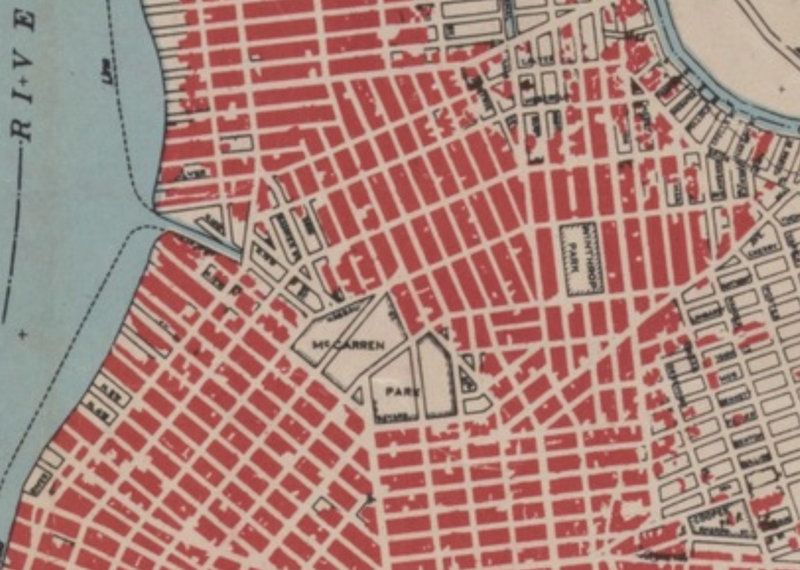 Image via New York Public Library Maps Collection
Image via New York Public Library Maps Collection
Considering McCarren Park’s many facilities, it’s hard to believe that the park was once on a site surrounded by railroad lines. According to NYC Parks, the site was “divided into four blocks by street railroad lines.” The city acquired each land parcel separately between the years of 1903 and 1905, via condemnation as reported in the Brooklyn Daily Eagle Almanac. Almost immediately, two playgrounds were developed—one was for boys located at Bedford and North 14th streets, while the other was for girls at the corner of Manhattan and Driggs Avenues. Slowly but surely, several developments over the following years would further transform it into the bustling site of activity it is today.
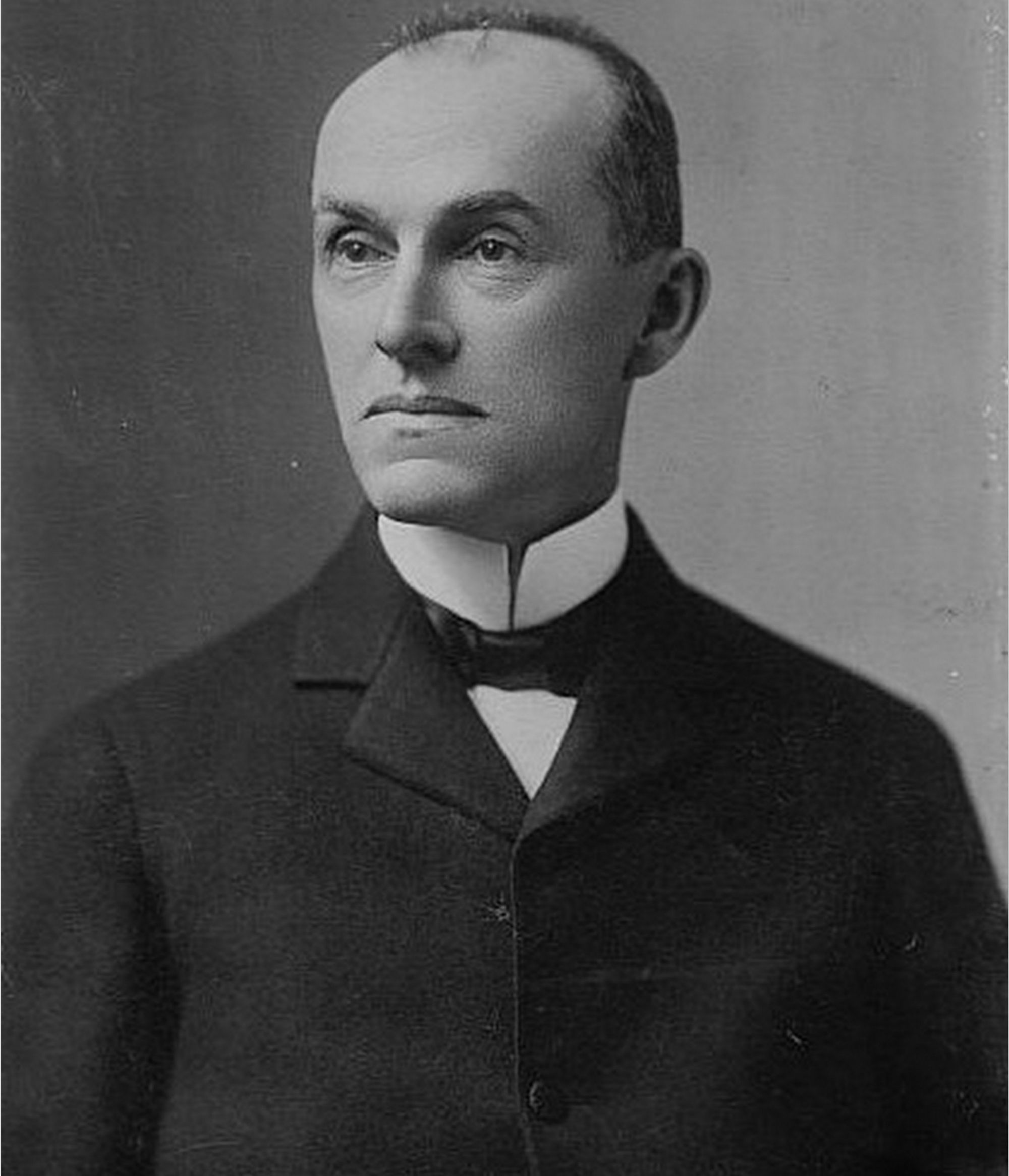 Senator Patrick Henry McCarren. Image via Wikimedia Commons
Senator Patrick Henry McCarren. Image via Wikimedia Commons
Perhaps lost to history for most who frequent the park is its namesake: New York State Senator Patrick Henry McCarren. He was one of NYC’s most famous personages of the era, and according to the book Brooklyn By Name, “McCarren’s funeral was the most significant (of its time) in Brooklyn,” apart from preacher Henry Ward Beacher’s. McCarren started his career as a cooper in the sugar refineries in Williamsburg (like the Domino sugar factory) and rose to become a Democratic political boss, in opposition to Tammany Hall. He became a state senator in 1881 and served for 18 years. McCarren was also involved in the project to build the Williamsburg Bridge. He personally chose the site of McCarren Park and obtained the funds to create it. Soon after he died in 1909, Greenpoint Park was renamed “McCarren Park.”
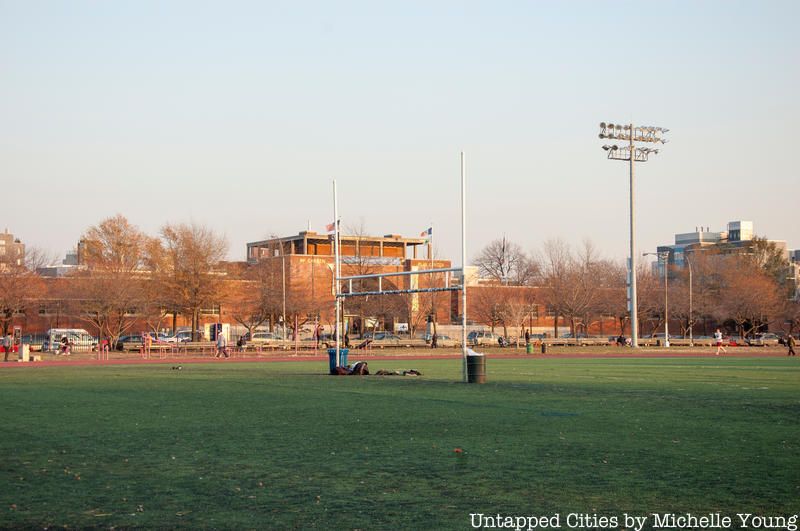
Today, McCarren Park is home to many athletic facilities—but did you know it used to have a farm? In 1914, the park became the site of the first children’s farm in Brooklyn. During the farm’s first season, 240 “little farmers” attended to 120 plots of land that were each 8’x4′. There, they grew a range of produce, including radishes, carrots, beats, beans, onions, corn, and lettuce. The garden also had a “Farm House.” By the next year, the Farm House shelter became a social center for clubs and church groups.
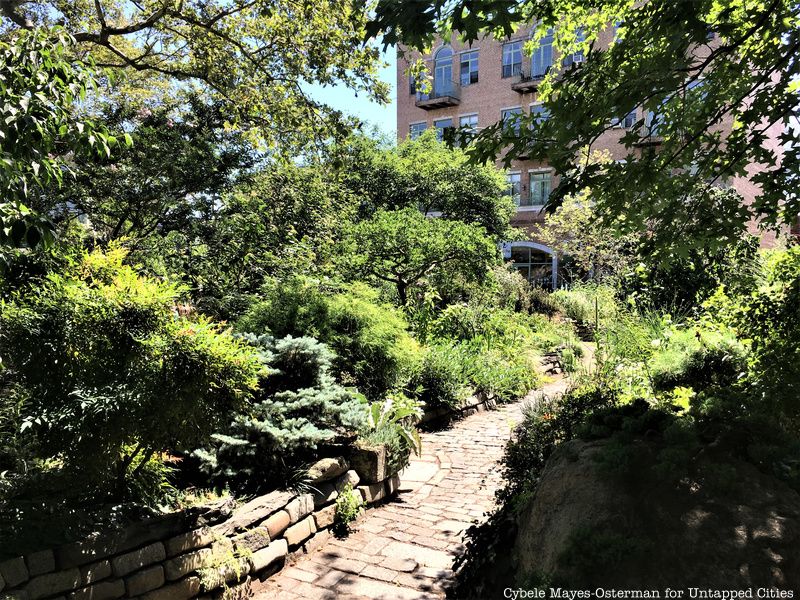
If you ever seek quiet refuge from McCarren Park’s bustling activity, Green Dome Community Garden is the place for you! This secret 2,500 square foot garden is a part of a “quiet zone”on North 12th Street between Union and Driggs Avenues that is completely maintained by volunteers. Its solitude is complete with winding stone paths and benches, and it’s open to the public everyday from 10AM to dusk. The Green Dome Garden was founded by a resident in 1997 who wanted to restore a neglected area of McCarren Park. Through the GreenThumb Program, the NYC Parks Department became involved in developing the garden, which also serves as a site for local residents and restaurants to bring compostable waste to fertilize plants. Check out other secret NYC gardens here.
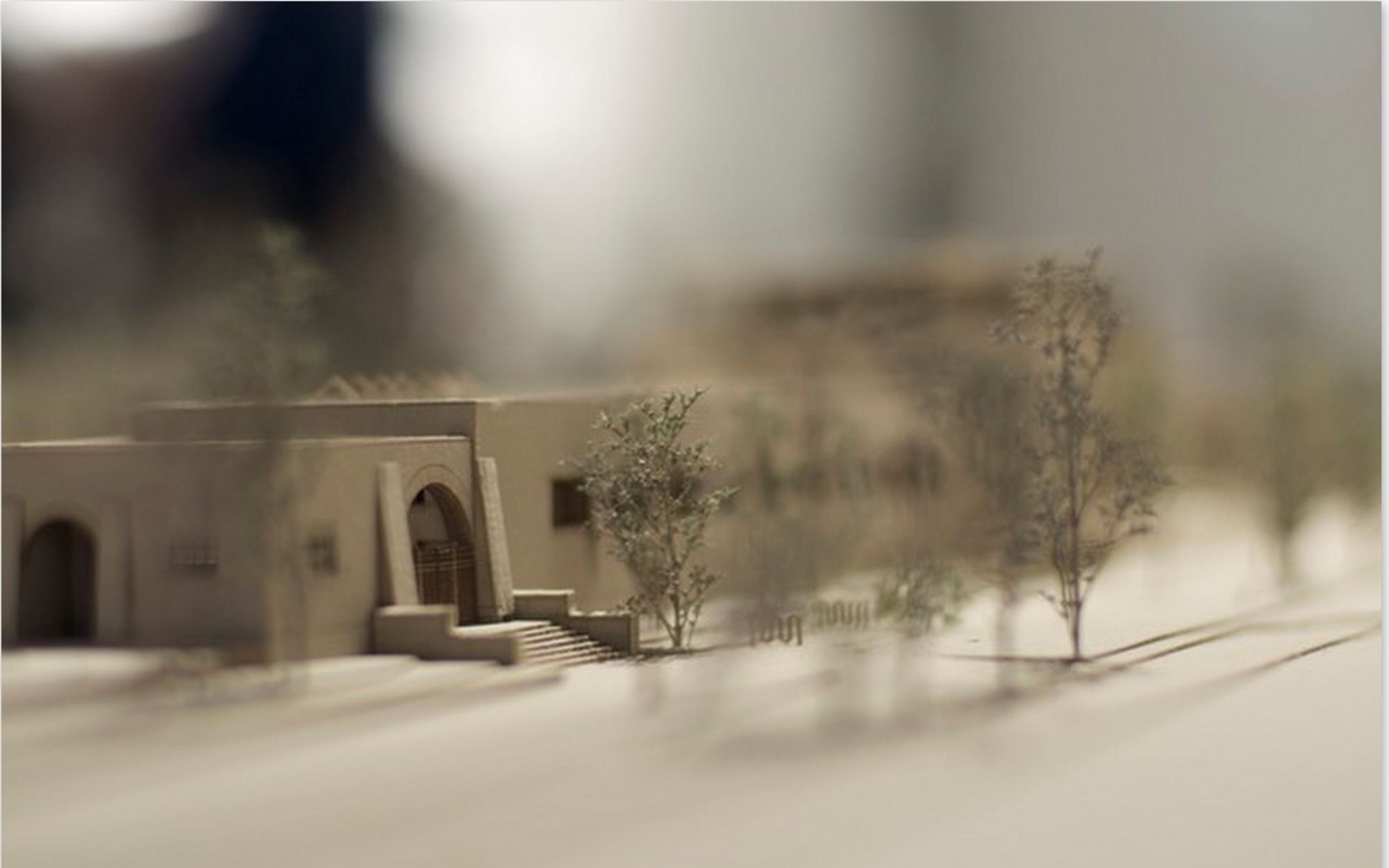 A Marvel Architects model of the McCarren Pool and Bathhouse. Photo by Jeffrey Man, courtesy of Usagi NY Gallery.
A Marvel Architects model of the McCarren Pool and Bathhouse. Photo by Jeffrey Man, courtesy of Usagi NY Gallery.
In 2012, Marvel Architects, the team behind some of Brooklyn’s recent architectural projects, restored the McCarren Park Pool. They strengthened the 1936 brick archway and removed years of graffiti. For this project, Marvel Architects lined the building’s inner walls with discarded planks from the Coney Island Boardwalk. They also covered the lobby ceiling with wire storage baskets—the same ones that McCarren Pool visitors used in the 1900s to hold their clothes.
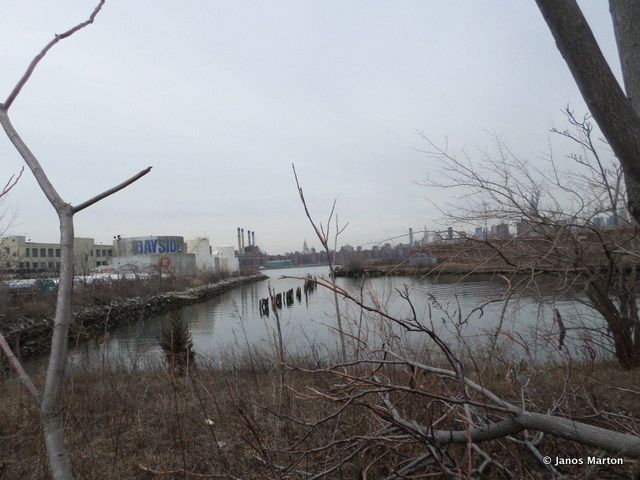 The Bushwick Creek running through McCarren Park on NYC’s current street grid.
The Bushwick Creek running through McCarren Park on NYC’s current street grid.
Before the early 1900s, Bushwick Creek ran through McCarren Park, even attracting boat riders. The creek had two sources: one was south of McCarren Park, while the other source was within the park. However, people began to throw trash into the creek, causing it to dry up. At this point, the city filled in the land entirely.
Next, check out The Top 12 Secrets of Brooklyn’s Prospect Park and 10 of NYC’s Most Unique Swimming Pools: Past, Present and Future.
Subscribe to our newsletter